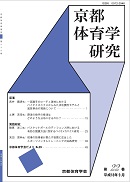The purpose of this study was to examine the effects of sports mental training (SMT) focused on technical coaches. In case l, a SMT was performed on a high school baseball team by a technical coach of the baseball team. A content of the training was a basic psychological skill like the goal setting. Levels of psychological competitive ability were assessed by the Diagnostic Inventory of Psychological- Competitive Ability for Athletes (DIPCA) before and after the training. As a result, the training improved the confidence and strategy ability of the baseball players. These findings suggested that combination of the SMT and the practice for technical skills was effective for the confidence and strategy ability. In case 2, we assessed effects of a SMT for a high school volleyball team and its technical coach. As a direct approach method, the SMT was performed on all the players by a SMT coach once a month. Moreover, as an indirect approach method, the SMT was performed on the technical coach by the SMT coach everyday. As a result, the team was 3rd place in Kinki competition tournament. A style of coaching in the technical coach was changed. Although a next goal had been lost when losing a match before the training, the technical coach set the goal of the team again, aiming at the Kinki competition tournament. The team switched the feelings from the lost game. Moreover, a remarkable improvement of psychological skill was seen in confidence and strategy ability for technical coach. Therefore, these results suggested the effects of SMT by technical coach and the effects of SMT for technical coach.
View full abstract
